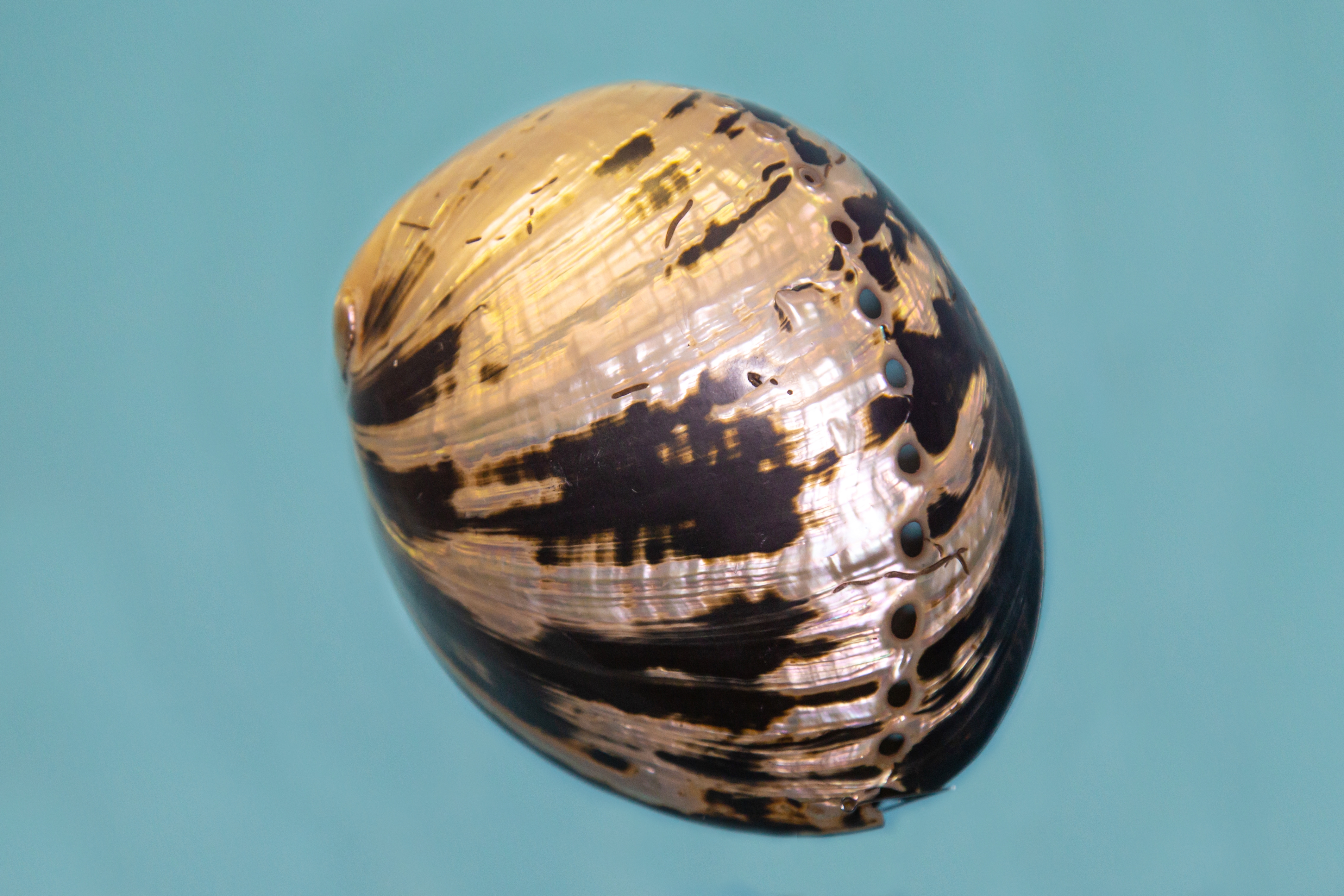Black abalone
(Haliotis cracherodii)

Description
Haliotis cracherodii, the black abalone, is a species of large edible sea snail, a marine gastropod mollusk in the family Haliotidae, the abalones. This species is relatively small compared with most of the other abalone species from the eastern Pacific, and it has a relatively smooth dark shell. This used to be the most abundant large marine mollusk on the west coast of North America, but now, because of overfishing and the Withering Syndrome, it has much declined in population and the IUCN Red List has classed the black abalone as Critically Endangered. The coloration is dark brown, dark green, dark blue or almost black. The silvery interior of the shell shows a pale pinkish and greenish iridescence. The exterior of the shell is smoother than most abalones, or may have low obsolete coarse spiral lirae and lines of growth. The shell is oval, evenly convex, the two sides equally curved. The back of the shell is regularly convex, with little algal growth. The shell is not carinated at the row of holes. The spire is near the margin. The cavity of the spire is minute, concealed or nearly so. The muscle scar is generally not distinct. There are usually five to seven small, open respiratory holes, or pores, along the left side of the shell and the rims of the holes are flush with the rest of the shell. These holes collectively make up what is known as the selenizone which form as the shell grows. The columellar plate is not truncate below, sloping inward, its face concave. The rear of the shell is spiralled, and the mantle, foot and tentacles are black. The interior of the shell is pearly with pink and green iridescence. The black abalone's shell length can reach a maximum of 20 cm (7.9 in), being typically 10-14 cm (3.9-5.5 in) long. In the living animal, the tentacles on the epipodium, the mantle, and the foot are black. Black abalones can be found along the Pacific coast of the United States from Mendocino County, California to Cabo San Lucas, Baja California, Mexico. Prehistoric distribution has been confirmed along much of this range from archaeological recovery at a variety of Pacific coastal Native American sites. For example, Chumash peoples in central California were known to have been harvesting black abalone approximately a millennium earlier in the Morro Bay area. The subspecies Haliotis cracherodii californiensis is found around Guadalupe Island, off Baja California (Mexico).
Taxonomic tree:







